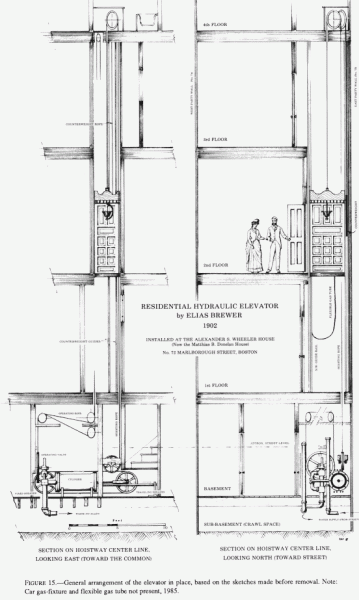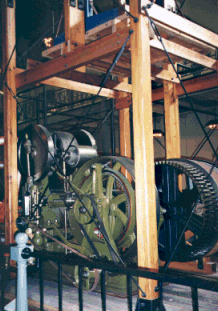Hydraulic Lifts
Today, an uplifting tale of a recently forgotten technology. The University of Houston's College of Engineering presents this series about the machines that make our civilization run, and the people whose ingenuity created them.
The Smithsonian Institution acquired a small hydraulic elevator in 1984. It came from a five-story Boston house. It had been installed there in 1902, and it ran until it jammed 40 years later. Curator Robert Vogel describes this lift, along with the whole forgotten technology of early domestic elevators.
The electric elevators that we ride appeared in the 1880s, right on the heels of public electric power. And they made it possible to build really tall buildings. But serious elevator-building had started 50 years before that. The first powered elevators appeared around 1830, when factories began using their central power systems to drive rope-and-pulley lifts.
Those early systems couldn't serve businesses and dwellings. They needed independent power supplies. Steam engines were the court of first resort, but they were cumbersome. Someone had to be on duty, stoking a boiler and lubricating valves.
An even more pernicious problem had to be solved before the public was going to accept any kind of elevator. People wanted some guarantee that the cab wouldn't fall like a stone if the power failed or a rope broke. Potential buyers looked at a small room riding on the end of spindly cable, and it reminded them of the hanging sword of Damocles.
Elisha Otis, whose name still decorates elevators today, solved the safety problem in 1854. He invented a foolproof automatic braking system. After that, at least for a time, steam elevators became as popular as any system that cumbersome could become.
Meanwhile, high-pressure public water systems were being put in after the Civil War, and people found two ways to put them to use: You could put an elevator at the end of a two or three-story plunger, but you usually wanted to ride higher than that. In the more useful system, a large hydraulic piston drove rope through a series of pulleys. A five-foot hydraulic piston stroke lifted an elevator fifty feet or more, and the power simply came out of the central water main.
So, at the same time electric elevators were making it possible to erect skyscrapers, these hydraulic lifts appeared in the high-rise houses that were springing up in the crowded Eastern cities. In 1901 and 1902, 68 of them were installed in Boston alone.
The Smithsonian's lift shows us a technology that most of us aren't even aware of -- one that's long since been overtaken by cheaper electric systems. But it was once a clean, ingenious, and wonderfully simple solution to a hard problem that arose as our crowded cities began to grow upward.
I'm John Lienhard, at the University of Houston, where we're interested in the way inventive minds work.
(Theme music)
Vogel, R.M., A Museum Case Study: The Acquisition of a Small Residential Hydraulic Elevator. Washington, D.C.: Smithsonian Institution, 1988.

(By permission)
Drawing by Robert Vogel

(Photo by Judy Myers)
The Smithsonian Institution's steam-driven Otis elevator, 1875